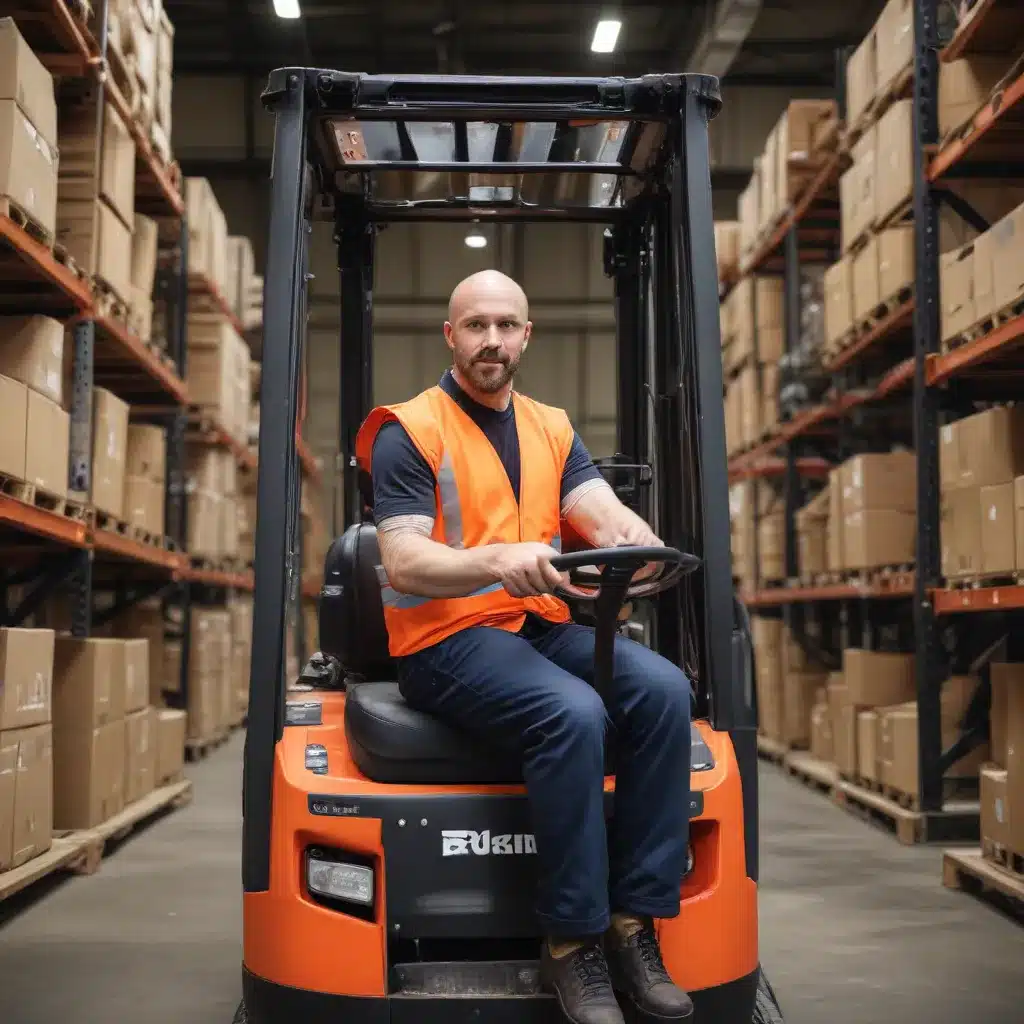
Optimizing the Operator Experience for Enhanced Efficiency
In the fast-paced world of warehousing and logistics, the comfort and well-being of forklift operators play a crucial role in driving productivity and operational success. As an industry expert, I’ve witnessed firsthand how ergonomic innovations can transform the operator experience, leading to improved safety, reduced fatigue, and increased efficiency.
In this comprehensive article, we’ll explore the latest advancements in forklift ergonomics and how they are enhancing operator comfort and overall productivity within warehouse environments.
Cabin Design for Optimal Operator Comfort
The operator’s cabin is the heart of any forklift, and manufacturers have placed a sharp focus on designing these spaces with the operator’s needs in mind. Innovative features such as adjustable seats, intuitive control layouts, and panoramic visibility are transforming the way operators interact with their machines.
Adjustable Seating: Ergonomic seating with customizable lumbar support, headrests, and armrests allows operators to find their optimal position, reducing the strain on their back and neck. This level of personalization not only enhances comfort but also minimizes the risk of musculoskeletal disorders, a common concern in material handling jobs.
Intuitive Controls: Strategically positioned levers, switches, and buttons within easy reach of the operator enable quicker and more precise control inputs. This design approach eliminates the need for excessive reaching or stretching, which can lead to fatigue and decreased productivity.
Panoramic Visibility: Forklift models with expansive glass panels and low-profile masts provide operators with superior visibility, reducing the need for awkward posturing to see around obstructions. This enhanced line of sight not only improves safety but also allows for more efficient navigation within the warehouse.
Noise and Vibration Reduction
Exposure to excessive noise and vibration can have a detrimental impact on an operator’s well-being, leading to discomfort, fatigue, and even long-term health issues. Manufacturers have addressed these challenges through innovative engineering solutions.
Vibration Dampening: The incorporation of advanced suspension systems and specialized materials in the forklift design helps to absorb and dissipate vibrations, providing a smoother and more comfortable ride for the operator.
Noise Reduction: Sophisticated soundproofing techniques, such as the use of acoustic insulation and engine enclosures, have significantly reduced the noise levels within the operator’s cabin. This creates a quieter work environment, minimizing the strain on the operator’s hearing and promoting better concentration.
Enhancing Ergonomics through Smart Technology
The forklift industry has embraced the power of smart technology to elevate ergonomics and operator productivity. Advanced systems and sensors are transforming the way operators interact with their machines, ultimately improving efficiency and safety.
Intelligent Control Systems: Forklift models equipped with advanced control systems can monitor and adapt to the operator’s inputs, providing real-time adjustments to speed, acceleration, and braking. This intelligent functionality reduces the physical effort required from the operator, leading to less fatigue and more precise maneuverability.
Telematics and Fleet Management: Integrated telematics solutions enable the monitoring of forklift performance, operator behavior, and maintenance needs. By providing data-driven insights, these systems help optimize fleet utilization, schedule preventive maintenance, and identify areas for improvement, ultimately enhancing the overall efficiency of warehouse operations.
Fostering a Culture of Ergonomic Awareness
Ergonomic innovations are not just about the forklift design; they also require a comprehensive approach that fosters a culture of ergonomic awareness within the organization. This includes effective training programs, ongoing communication, and a commitment to continuous improvement.
Operator Training: Comprehensive training programs that educate forklift operators on the proper use of ergonomic features, safe operating procedures, and injury prevention techniques are crucial. Well-trained operators are more likely to maximize the benefits of ergonomic enhancements and maintain a safe work environment.
Collaborative Approach: Encouraging open communication between operators, supervisors, and manufacturers allows for the identification of pain points and the development of tailored solutions. This collaborative mindset ensures that ergonomic innovations address the specific needs of the workforce and lead to tangible improvements in productivity and well-being.
Continuous Improvement: Regularly reviewing and updating ergonomic practices, along with implementing feedback from operators, ensures that forklift ergonomics remain at the forefront of the organization’s priorities. This commitment to continuous improvement demonstrates a genuine concern for the well-being of employees and a dedication to maximizing operational efficiency.
The Proven Benefits of Forklift Ergonomic Innovations
By embracing the power of ergonomic innovations, forklift operators and warehouse managers can unlock a multitude of benefits that positively impact the bottom line:
Improved Operator Comfort and Well-Being: Reduced physical strain, decreased fatigue, and a healthier work environment contribute to increased job satisfaction, reduced absenteeism, and a more engaged workforce.
Enhanced Productivity and Efficiency: Effortless maneuvering, quicker response times, and improved visibility translate into more tasks completed per shift, ultimately boosting overall productivity.
Increased Safety and Reduced Accidents: Ergonomic features that enhance visibility, stability, and operator awareness help to minimize the risk of collisions, tip-overs, and other forklift-related incidents, creating a safer work environment.
Cost Savings and Operational Optimization: Reduced maintenance costs, lower worker’s compensation claims, and improved asset utilization all contribute to a positive return on investment for organizations that prioritize forklift ergonomic innovations.
Conclusion: Elevating Warehouse Operations through Ergonomic Excellence
As the forklift industry continues to evolve, the importance of ergonomic innovations cannot be overstated. By prioritizing operator comfort and well-being, manufacturers are redefining the way warehouse operations are conducted, driving increased productivity, enhanced safety, and a more engaged workforce.
Whether you’re managing a logistics hub, overseeing a distribution center, or responsible for a manufacturing facility, embracing the power of forklift ergonomic innovations can be a game-changer for your organization. By investing in ergonomic solutions, you unlock a world of opportunities to elevate your warehouse capabilities, boost efficiency, and stay ahead of the competition.
To learn more about the latest forklift ergonomic enhancements and how they can benefit your business, visit Forklift Reviews – your trusted source for expert insights and industry-leading solutions.

